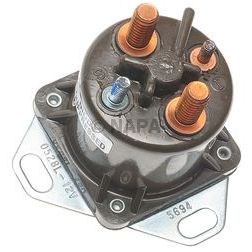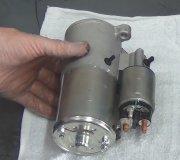Dandy. Let me share what I learned about how this works on my '88 Grand Caravan. Fuel coming into the tank from the engine on the fuel return line does not dump into that bowl the pump sits in, as you would expect. Instead, it flows up a ramp alongside the outside of the bowl, then washes into the bowl. The venturi action draws gas from the tank along with it, and it's that gas that keeps the bowl full. Knowing that, if the fuel level is real low, when parked on an incline, there won't be any to get pulled into the bowl. Only the returning gas will flow up the curved ramp and go into the bowl, but a large percentage of that will just run to the lowest point of the tank. In my gas tank, that bowl only holds about a quart of gas. If the engine idles too long while on an incline, the bowl will run empty. The good news is unlike with an older mechanical fuel pump that has to suck gas all the way to the front of the vehicle, an electric pump will start to pump gas right away once the truck is on level ground and fuel spills into the bowl. The thing to keep in mind is it's that returning gas that draws all the gas into the bowl. Were it not for that, no gas would spill into the bowl to keep it full once the tank got down to about a half tank.
As a point of interest, I found the fill pipe dumps gas right into that bowl, so if I run out, it just takes a half gallon to get going again. On the '94 Grand Voyager I'm driving now, that appears to be not the case. When I run it empty, (on purpose), I have to add almost five gallons before the engine will start. I assume that is because it needs to get high enough to spill over into the bowl. You should remember that too if this happens again. If you have, ... Lets say, ... Only one gallon left in the tank, and you're on an incline, only some of the fuel coming back on the return line will go into the bowl. Once that is used up, even coasting to level ground won't do it. There won't be any returning gas to pull additional gas into the bowl. You will likely need to pour in a good half gallon, and if that doesn't work, add a bunch more before you go looking for other causes.
As a second comment of value that may or may not be related, when I worked for my cousin in his tv repair shop, he was buying Ford vans every few years, and the dealer finally told him to not even bother complaining about the fuel gauge, ... Again. "That's the way they are" they told him. His grump was there was about seven gallons left in the tank when the gauge read "empty". Later I learned they did that to insure the pump motor was always sitting in gas to cool it. People who habitually run the tank close to empty had a higher incidence of pump failures, so they modified the sending unit so people would add gas before the level got too low.
Happy to hear yours is solved. Come back and see me again.
Thursday, December 31st, 2020 AT 8:57 AM
(Merged)
















